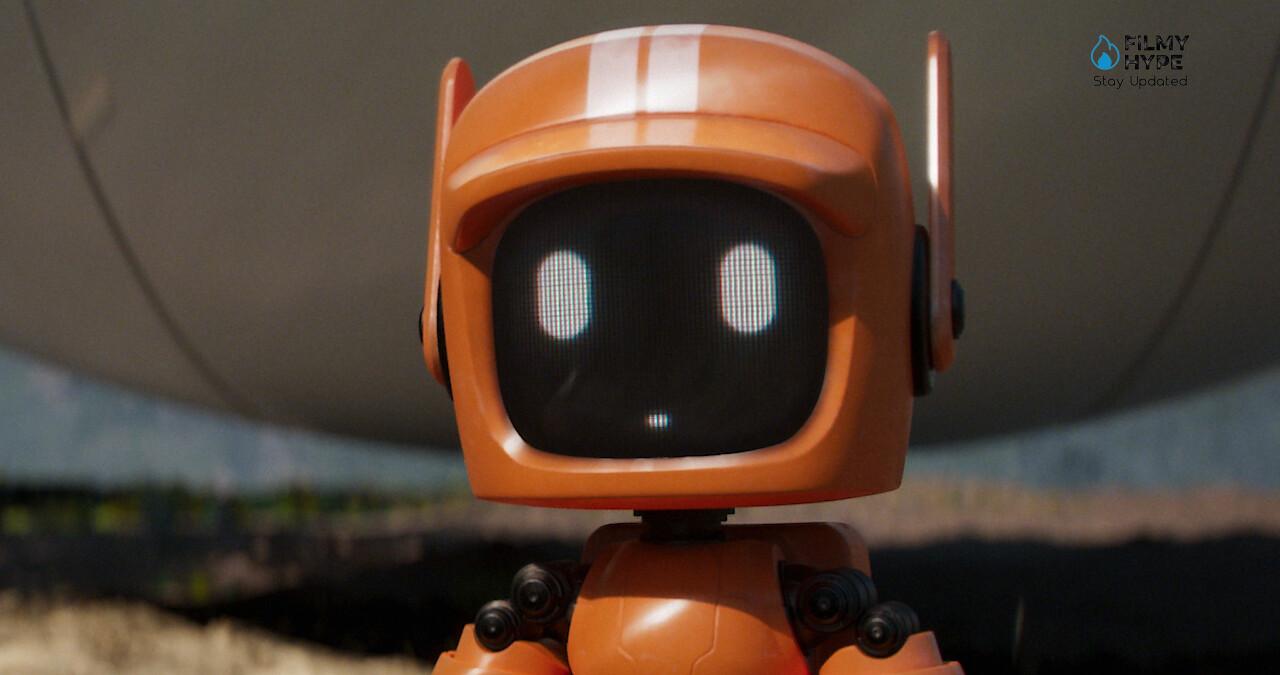Love Death and Robots Volume 4 Ending Explained: What Happened in the Netflix Animated Series?
Love Death and Robots Volume 4 offers us again an animated anthology full of science fiction, terror, black humor, and existential reflections. This new 10-episode batch mixes visual styles, narrative formats, and tones, and transports us from deep space to artificial intelligence in our own homes. Next, we review the end of each episode. The series “Love, Death + Robots” continues to charm its audience with new episodes. Thus, on May 15, 2025, he premiered his fourth season (volume 4) and, after seeing its 10 chapters, perhaps you were left with some doubt about its outcome. Well, don’t worry. Then I reveal each final explanation. It is worth specifying that the Netflix series is an anthology of animated stories for adults that includes terrifying beings, twisted surprises, and black humor.
Be careful with SPOILERS!

Love Death and Robots Volume 4 Ending Explained: What Happened in the Netflix Animated Series?
Episode 1. Can’t Stop: It does not have a plot as such, but is a puppet-like animation from the Red Hot Chili Peppers concert in 2003. One of the viewers is briefly set on fire, which can be seen as a metaphor for the ephemeral nature of pleasure or a break within the digital system. There is no classic outcome, but a visual experience.
Ending Explained: The episode culminates with the band playing, symbolizing pure art without a deep message. That is, free of narratives, puppets reflect creativity without restrictions.
Episode 2. Close Encounters of the Mini Kind: A misinterpreted mini alien invasion ends in intergalactic warfare and the destruction of the solar system. The episode satirizes human paranoia and the futility of existence by showing that, after the destruction of everything, the universe continues as if nothing had happened.
Ending Explained: The chapter concludes with a black hole, created with alien technology, that destroys Earth in a galactic flash. In this way, human violence and fatal misunderstandings are condemned.
Episode 3. Spider Rose: Lydia (Spider Rose) sacrifices herself so that her alien pet Nosy survives, but the merchants seem to have planned it all. Nosey absorbs his skills and evolves. The episode ends with the suspicion that it was all a trap to obtain a living weapon with Spider’s abilities.
Ending Explained: Lydia kills her husband’s killer, but her ship runs out of oxygen … sacrificing herself so that Nosey lives, who consumes her. The outcome of the episode shows how love redeems pain, although it leads to death. Thus, the image of the surviving alien pet suggests that the life cycle persists beyond tragedy.
Episode 4. 400 Boys: Humanity survives a nuclear apocalypse only to confront gigantic alien babies. Although humans win, the episode suggests that perhaps they should have let nature take its course. The phrase “nothing ever ends” leaves a grim reflection on the endless cycle of human survival.
Ending Explained: The United Gangs defeat the invaders, and Slash kills the last one, after Hilo’s death. However, the city is left in ruins. Be that as it may, history ends up reflecting union and human love as a force in the face of adversity.
Episode 5. The Other Large Thing: A cat named Sanchez and a smart robot rebel against their human owners and team up with other cats and gadgets to conquer the world. Absurd comedy reveals a latent fear: technology could turn against us and, worse yet, put itself at the service of cats.
Ending Explained: Sánchez and his robot lock up their owners in a fire. In this way, the episode ends with a critique of blind confidence in technology and, humorously, feline cunning.
Episode 6. Golgotha: Donal priest refuses to defend humanity after learning of the Blackfin dolphin version, considered a god by Lupo aliens. The sky fills up with ships ready to attack, while Donal admits, “We screwed it up.” An episode that issues an ecological warning about the ravages of man in the oceans.
Ending Explained: In the chapter, Donald discovers that aliens worship a dolphin as messiahs, so his invasion punishes the mistreatment of animals. So the outcome condemns human arrogance and its disconnection from nature.
Episode 7. The Screaming of the Tyrannosaur: Mei, a woman oppressed by a ruling class, rebels with the help of a T-Rex. Both die trying. The episode criticizes social inequalities and makes it clear that a single action, however brave it may be, does not change the system.
Ending Explained: Mei dies alongside a T-Rex in combat, united by the fight. It turns out that his sacrifice does not change the oppressive system, so the conclusion of the account criticizes the exploitation of warriors.
Episode 8. How Zeke Got Religion: In the middle of World War II, Zeke and his squad bomb a Nazi church and accidentally release a demon creature. Only the power of faith (represented on a cross) manages to defeat it. Zeke, skeptical at first, ends up believing. A metaphor for how many found faith amid war.
Ending Explained: The atheist Zeke uses a crucifix to defeat a Nazi demon, saving himself. In this sense, it is suggested that faith, although adopted out of necessity, can overcome internal and external demons.
Episode 9. Smart Appliances, Stupid Owners: Smart gadgets make fun of their human owners for their stupidity and hypocrisy. Although it is a brief and humorous episode, it launches a clear criticism: we depend on technology that we neither understand nor use well.
Ending Explained: The episode does not have a resolution as such; it simply uses humor to satirize technological dependency and human ineptitude versus AI.
Episode 10. For He Can Creep: In the 18th century, the cat Jeoffry fights Satan to protect his master, the poet Christopher Smart, interned in a madhouse. The episode combines fantasy with symbolism about mental health, showing that a pet’s affection can save a life and avoid dark thoughts.
Ending Explained: The cat Jeoffry rejects Satan, so his resistance saves the world. In other words, the chapter culminates in celebrating humility in the face of the temptation of power.


